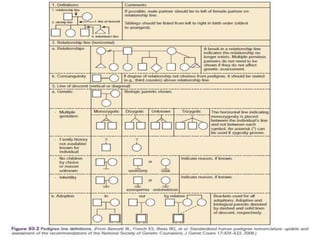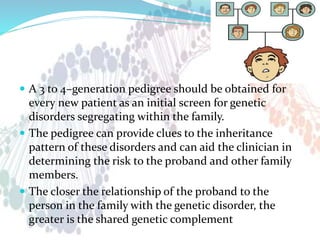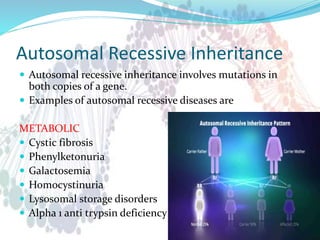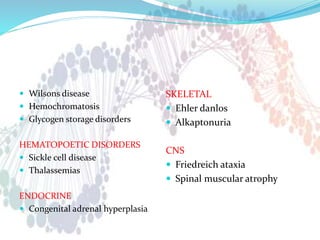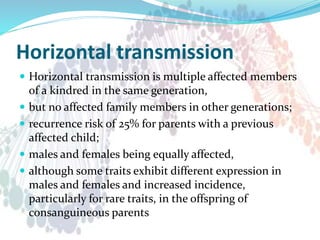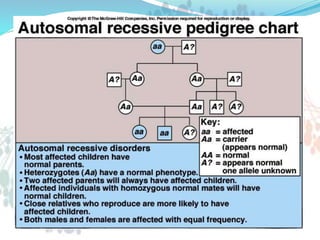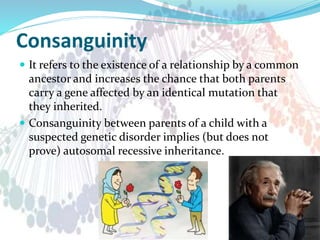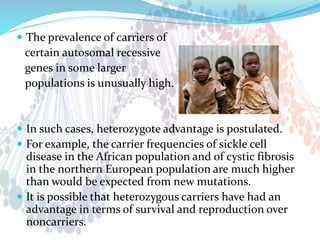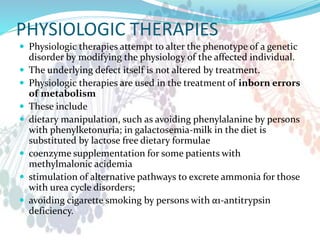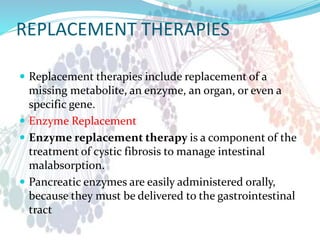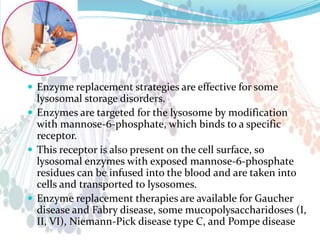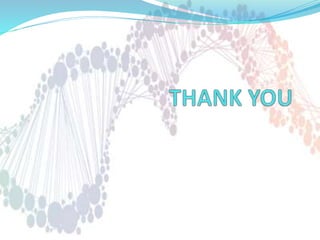This document discusses family history and pedigree notation in pediatrics. It explains that a detailed family history is important for identifying genetic risks and patterns of inheritance for diseases. It describes how to systematically create a pedigree using standard symbols to depict a family's medical history over generations. The document then discusses Mendelian patterns of inheritance including autosomal recessive, dominant, and X-linked inheritance. It provides examples of diseases that can be inherited in an autosomal recessive manner and explains carrier screening. The document concludes by discussing genetic counseling and therapies for preventing or treating genetic disorders.




